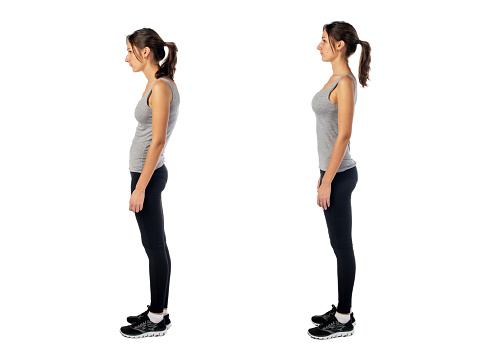We have said it before and we’ll say it again, we are not your typical gym with your average personal trainers. We incoproate Functional Patterns training methodology to train the human body the way it was designed to function. Our approach aims to undue the damages inflicted on the body from all traditional means of exercises and mobility that don’t respect the physics and tensegrity of human biomechanics.
Traditional training includes weightlifting, bodybuilding, olympic lifting, crossfit, cycling, yoga, pilates, gymnastics, animal flow, isolated stretching, functional range conditioning, H.I.I.T. training, spin class, and group classes with the objective of burning max calories and gaining (dysfunctional) muscle.
All these forms of exercise are the antithesis of optimal biomechanics and makes it very hard to create the muscle associations we need to make to alter your structure to the degree we could if you weren’t doing those types of training.
If you’re wanting to learn or do Functional Patterns training you’ll get the best results when you aren’t engaging or plan to return to any of the above mentioned methods, as none of them aim to enhance human biomechanics and therefore create a direct hinderance towards you getting the best and fastest results.
While the intent behind all of these methods is good, the application doesn’t deliver. All of the above mentioned methods cause a disconnect from human movement. When you think of “human movement” think of walking as a basic example, and then think about what all of the above mentioned forms of training look like, and now think about how they don’t align with the motions of human movement. So the deeper you go into those forms of training, the further away you go from the fundamentals of how the human body was born to move. And the further you go away from how you were born to move the less optimally your body moves and the more likely your body will suffer from pain and breakdown from injury.
We aren’t saying that these forms of training are terrible and that you should never do them, but what we are saying is that your body wasn’t made for these forms of training, which is often why people get injured, experience unexplained aches and pains, and become less inclined to move well the more they participate in these. If you are experiencing some of these symptoms and are participating in these styles of training, then in that case, we would recommend not doing them. At least for some time to decide if its causing you harm. In other words if you’re participating in them and then stop and your body starts feeling better, then you can see the correlation between these styles of training and the outcome on your body.
If you really want to heal your body, take it a step further and start participating in a training style that matches the way the human body moves, and accounts for all of the intricacies that make up human motion. Enter Functional Patterns training. A system that makes your muscles work (contract/ engage/ activate) during exercise the way they work in the real world. Translating the work you do in the gym to a stronger body in reality. But the key is that you need to train your body accordingly instead of just participating in exercise for the sake of exercise.
Exercise is good, but not all exercise is created equal or produces the same outcome. Some of the above mentioned training styles become just a social hour (albeit a healthier social hour than drinking at the bar) or a way to fit in because everyone else is going to the local gym or workout class. But you should ask yourself, just because those people are working out, are they absent of pain, are they capable of moving without restriction, are they only good at exercising or can they perform in any given scenario?
Hopefully after reading this you’ll walk away with a deeper understanding about how exercise can benefit you if you exercise in a manner that respects the way the human body was designed to move. If you don’t, then sure exercise will have some superficial benefits that your doctor may recommend like lowering your blood pressure if you’re a couch potato and stimulating your muscles as opposed to letting them waste away, but if you don’t exercise the right way then the harms can outweigh the potential benefits. For example, sitting on a spin bike 5 days a week disconnects your upper body from your lower body, places your spine in a kyphotic posture, and doesn’t strengthen your core muscles. This can result in lower back pain from lack of core support, problems when you walk because your only training your body in a seated position, severed muscle chains because you aren’t training your kinetic chain for the way your entire system operates naturally, and a poor posture that makes it look like you’re depressed because you’re always hunched over, eventually maybe leading to some form of depression because your posture will influence your mood- via the emotional links with your fascia… see how health and fitness goes WAY deeper than just exercising your muscles?
These are just examples to start making you think about why we are still such an unhealthy society, with obesity and type 2 diabetes, and still have to have joint replacement surgeries and live with lower back pain even though people are exercising. It’s because nobody is taking the time to educate how complex exercise really is and the way the human body should be trained. Most of us are still working out with a structure from P.E. class or collegiate athletics or what your doctor recommends or what you see on T.V. The problem is that these exercises just keep you running in circles on the hamster wheel instead of solving problems with your body to make you a better functioning human without pain and risking injury when you move, play sports, move furniture, walk your dogs, chase your kids, grocery shop, do yard work, and live life.
If you’re tired of exercising without any applicable, noticeable benefit then contact us to take the first step toward exercising with a purpose so the results extend beyond body composition, weight loss, muscle tone, and cardiovascular health, but start to include a stable posture, a strong body for doing what you do most, and most importantly achieving fitness without pain so you can have a body that handles the demands of real life!











